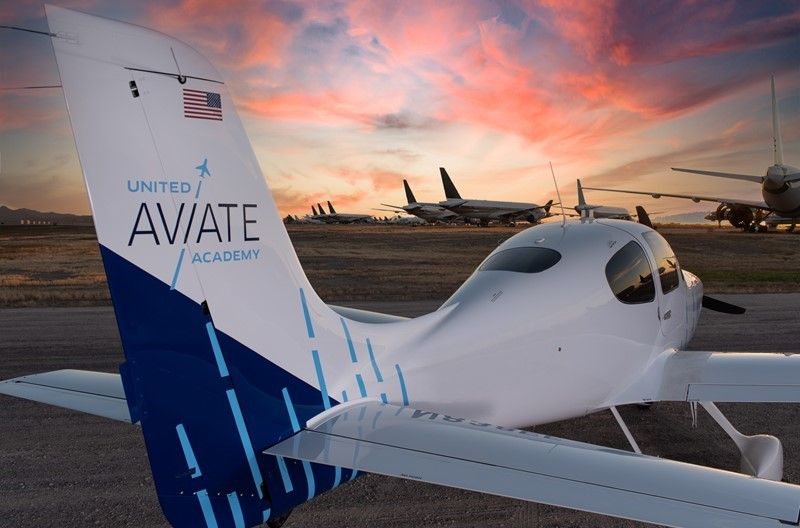Cirrus Aircraft has delivered the first United Aviate Academy SR Series TRAC20 training aircraft as part of a 25 aircraft order placed by the school last February. The order also includes options for up to 50 additional TRAC20 aircraft to be used for initial pilot training at the academy. The United Aviate Academy got its start in February 2020 when United Airlines purchased Westwind School of Aeronautics as an expansion of its Aviate pilot development and recruitment program.
“Cirrus Aircraft is proud to work with United Aviate Academy to provide the next generation of United Airlines pilots with a fleet of advanced training aircraft built with the Cirrus Airframe Parachute System,” said Cirrus Aircraft CEO Zean Nielsen. “Together, we are introducing more people to aviation and providing new opportunities for underrepresented populations by removing barriers and supporting new programs like United Aviate Academy.”
As previously reported by AVweb, United Aviate Academy welcomed its first class of students in December 2021. The academy offers a one-year ab initio training program at Arizona’s Phoenix Goodyear Airport (GYR) after which graduates can build time at partner schools and Part 135 operators before moving to a United Express carrier. United reports that it intends to hire more than 10,000 pilots and train around 5,000 students at the Aviate Academy over the next ten years.




































It’s impressive what they’re doing. I’d still prefer a pilot up front who started in gliders and ragwing taildraggers, where he learned to fly low and slow and with his head out of the cockpit. And with no electronics, not even a GPS or smart phone. Master the inside of the box first before flying by push button.
But what do gliders and taildraggers have to do with flying a large transport aircraft, other than they all have wings? The areodynamic details of all of them are different.
Experience in a variety of aircraft is good because you can learn to appreciate the strengths and weaknesses of what you’re flying, but becoming a great tailwheel pilot doesn’t mean you’ll automatically be a great airliner pilot. And there’s no reason why a pilot with a good instructor can’t learn the basics of aircraft control in whatever they’re training in.
You have a good point. On the other hand with some of the FO candidates I have seen at my company, and the last couple of fatal jet accidents, there seems to be lack of understanding of the basics. If those basic concepts of flying are not mastered flying a trainer at the start of training, it is not going to go well in larger, faster, and more advanced planes.
It seemed at one time that most airline pilots;
I’ve had many tell me this,
have a ragwing taildragger in their hangars at home
which they really preferred to fly.
True flying!!
Has this changed with the new generation of ‘button pushers?’
If so, they are definitely not,
as Arthur Hailey’s Airport novel put it,
standing at the end of a runway to feel the wind in their faces.
Dave
Our son is going to be going there in July or August to start his training. He has already done several interviews, tests, taken the PPL knowledge test written and gotten a 1st class medical.
Kent, what student wants to spend a whole lot of money flying an old steam Guage aircraft? Not many I know of. Myself, when I was approached by an FBO competitor, they were trying to get my business. However, offering me a 172 glass panel for the cost of a 182 RG steam Guage, I took the 182. But that’s me. I couldn’t care less about the glass panel. But a 182 RG? I felt the need for speed. )
The life of a commercial airline pilot doesn’t just include the pilot. It usually also includes the pilots wife.
Airlines are wise to set up training facilities near their main hubs. This is where pilots will likely meet their future spouse. And that future spouse will most likely have family close by. A lonely spouse is never a good outcome. Pilot and divorce is almost inevitable if the spouse doesn’t have family support locally.